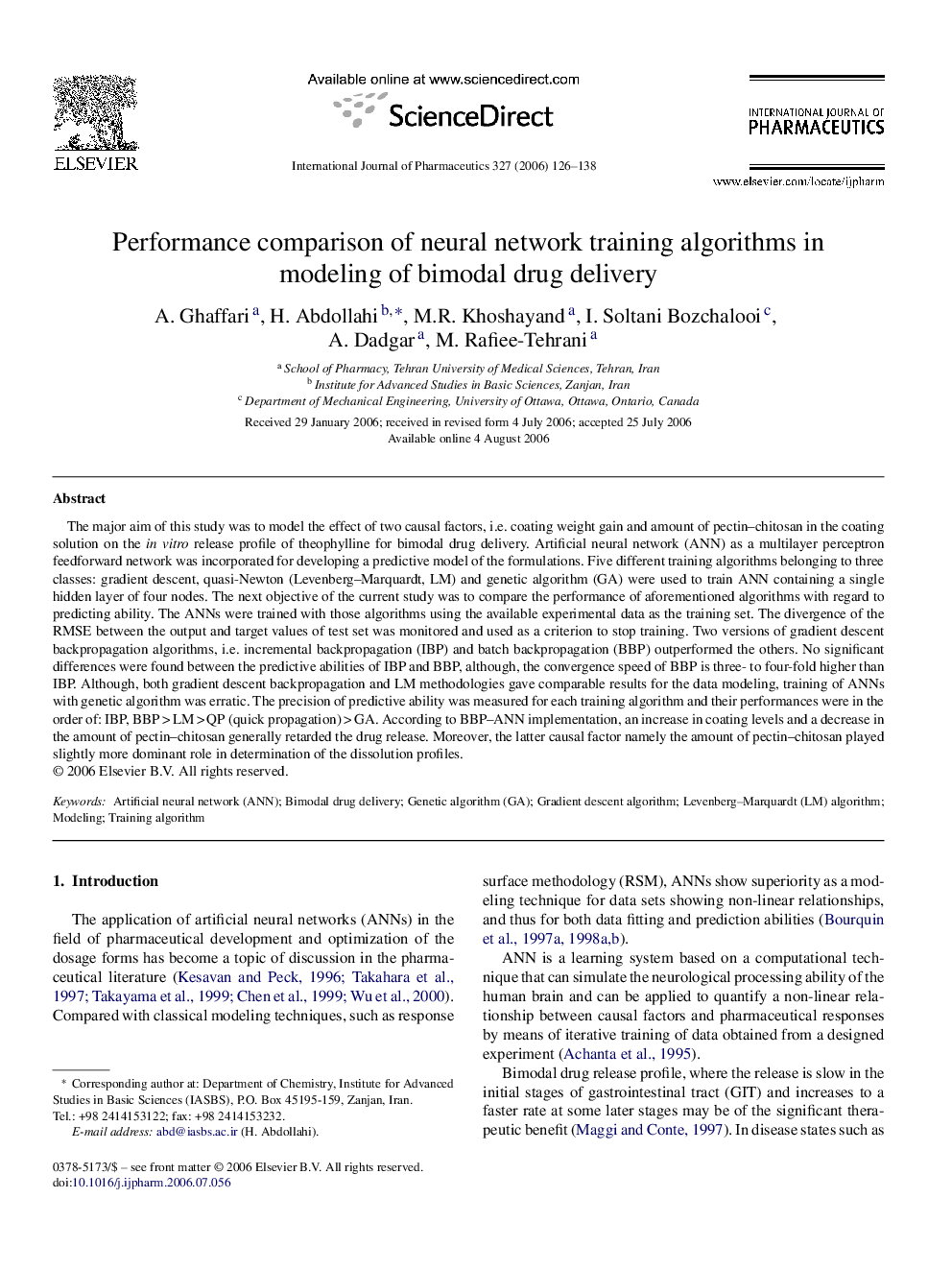| کد مقاله | کد نشریه | سال انتشار | مقاله انگلیسی | نسخه تمام متن |
|---|---|---|---|---|
| 2506501 | 1557522 | 2006 | 13 صفحه PDF | دانلود رایگان |

The major aim of this study was to model the effect of two causal factors, i.e. coating weight gain and amount of pectin–chitosan in the coating solution on the in vitro release profile of theophylline for bimodal drug delivery. Artificial neural network (ANN) as a multilayer perceptron feedforward network was incorporated for developing a predictive model of the formulations. Five different training algorithms belonging to three classes: gradient descent, quasi-Newton (Levenberg–Marquardt, LM) and genetic algorithm (GA) were used to train ANN containing a single hidden layer of four nodes. The next objective of the current study was to compare the performance of aforementioned algorithms with regard to predicting ability. The ANNs were trained with those algorithms using the available experimental data as the training set. The divergence of the RMSE between the output and target values of test set was monitored and used as a criterion to stop training. Two versions of gradient descent backpropagation algorithms, i.e. incremental backpropagation (IBP) and batch backpropagation (BBP) outperformed the others. No significant differences were found between the predictive abilities of IBP and BBP, although, the convergence speed of BBP is three- to four-fold higher than IBP. Although, both gradient descent backpropagation and LM methodologies gave comparable results for the data modeling, training of ANNs with genetic algorithm was erratic. The precision of predictive ability was measured for each training algorithm and their performances were in the order of: IBP, BBP > LM > QP (quick propagation) > GA. According to BBP–ANN implementation, an increase in coating levels and a decrease in the amount of pectin–chitosan generally retarded the drug release. Moreover, the latter causal factor namely the amount of pectin–chitosan played slightly more dominant role in determination of the dissolution profiles.
Journal: International Journal of Pharmaceutics - Volume 327, Issues 1–2, 11 December 2006, Pages 126–138